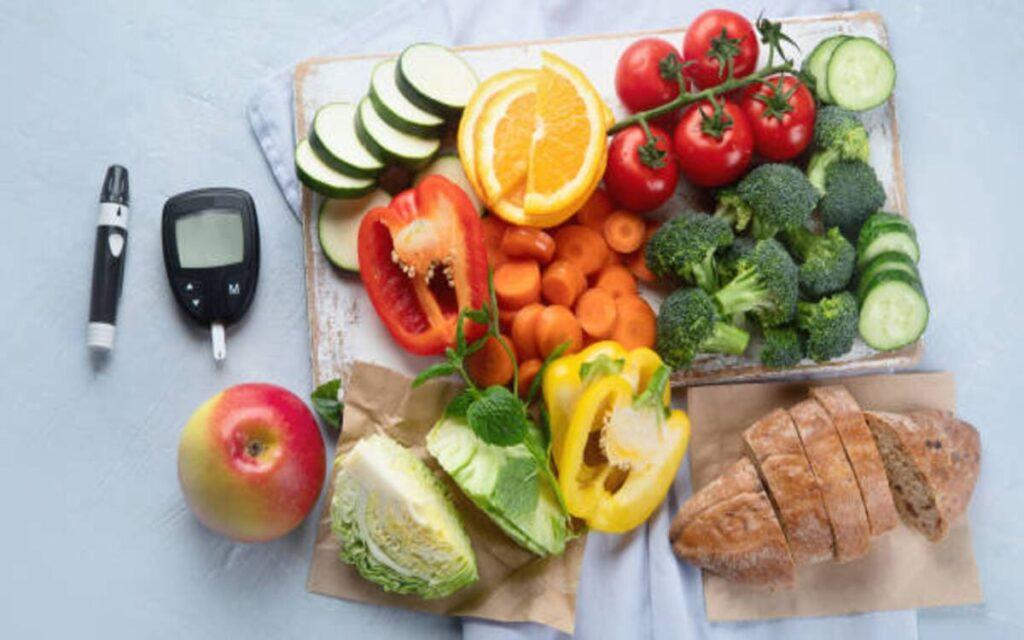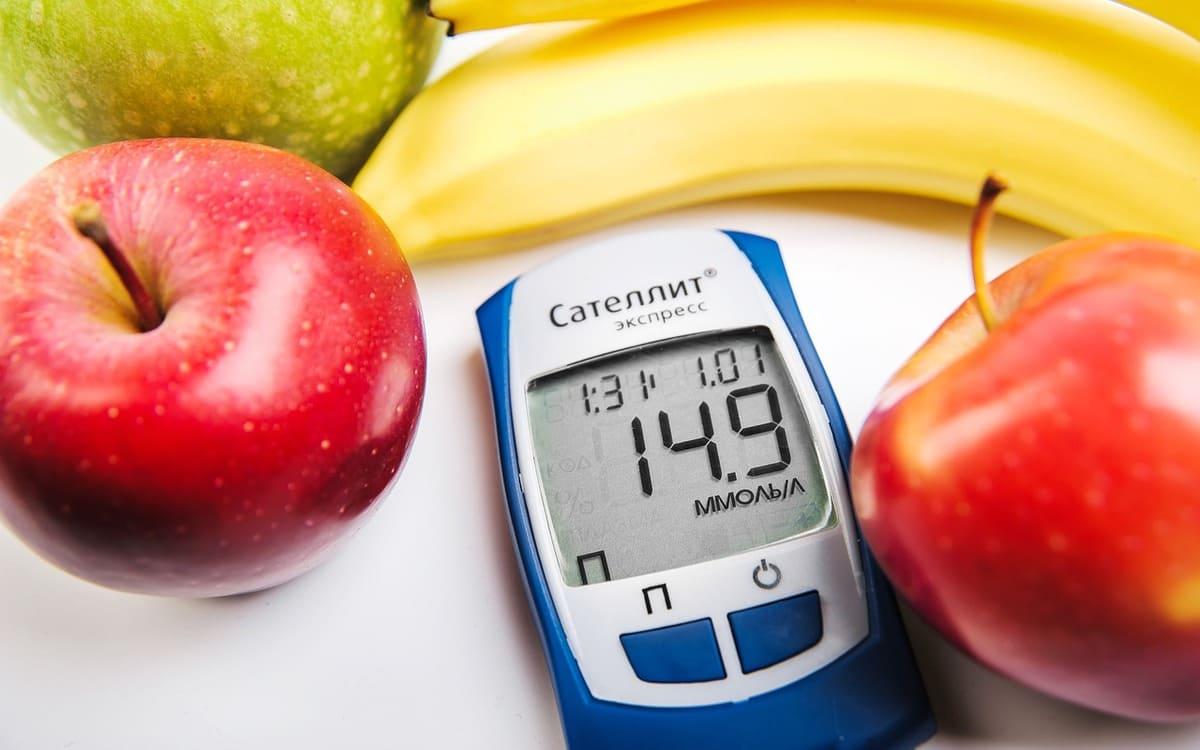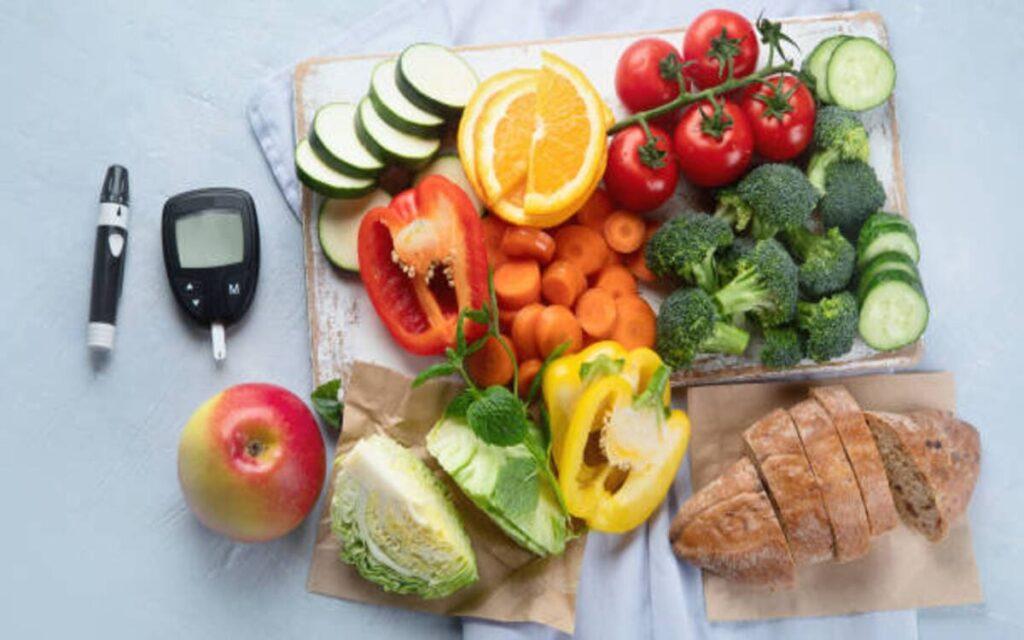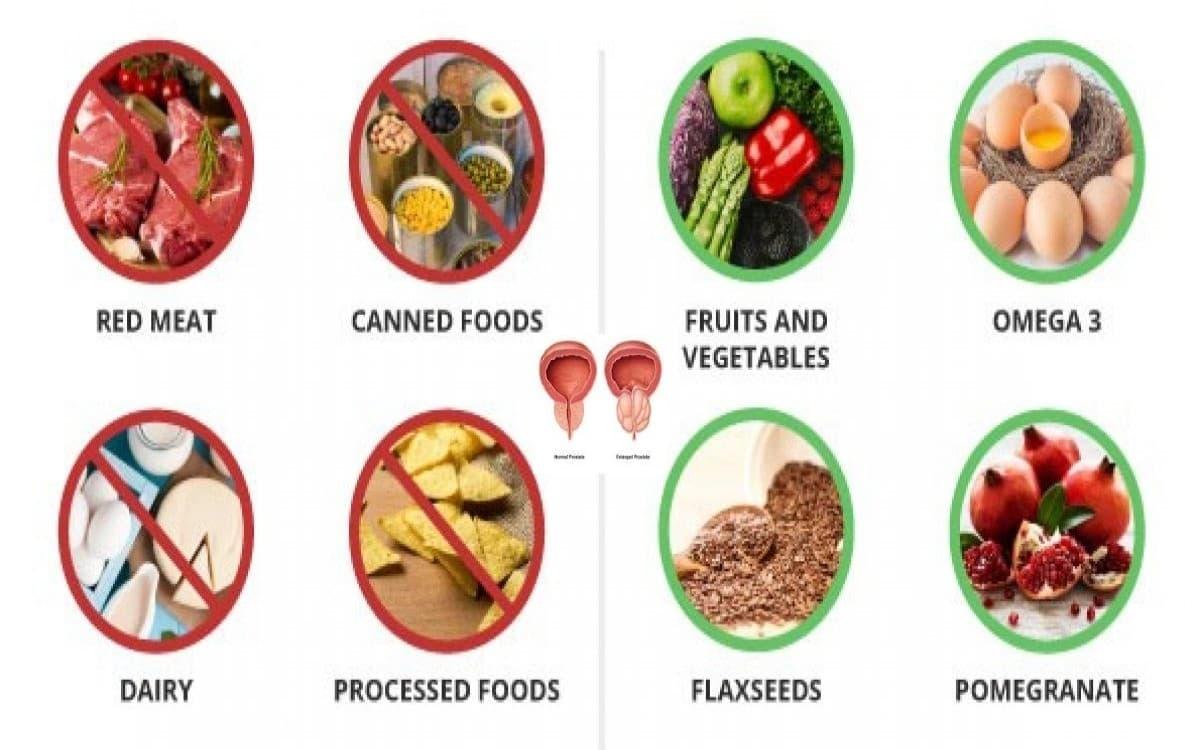Diabetes
10 Delicious Recipes for Type 2 Diabetes Wellness – To Take Control of Your Blood Sugar Levels

Breakfast is widely considered the most important meal of the day. For individuals living with type 2 diabetes, a nutritious and balanced breakfast is crucial for maintaining healthy blood sugar levels throughout the day.
By starting the day off right with diabetes-friendly breakfast choices, people can avoid energy crashes, glucose spikes, and other complications related to improper nutrition.
In this comprehensive guide, we will discuss the significance of making informed breakfast choices for effective type 2 diabetes management.
You will learn about the impact of breakfast on blood sugar control, how to balance carbs, proteins, and fats, as well as discover 10 nutritious and delicious breakfast recipes suitable for a diabetes-friendly diet.
Proper breakfast choices can help regulate appetite, promote satiety, and provide sustained energy levels while keeping blood sugar levels stable.
Let’s get started exploring the connection between breakfast and diabetes, and how you can make simple yet positive changes to your morning routine.
Understanding Type 2 Diabetes and Breakfast
For individuals with type 2 diabetes, there is a clear link between breakfast choices and blood sugar control throughout the day. Here are some key things to understand about breakfast and diabetes:
- Impact on Blood Sugar – Eating breakfast can help regulate blood sugar levels and insulin sensitivity. Skipping breakfast may lead to hypoglycemia as well as hyperglycemia after overeating later in the day.
- Low Glycemic Foods – Choosing low glycemic index foods that do not spike blood sugar is important. High glycemic foods like sugary cereals, fruit juices, muffins, etc. can cause unstable blood glucose.
- Balanced Nutrition – Having a good balance of carbs, protein and fat at breakfast can promote steady energy levels and avoid blood sugar crashes or spikes.
- Portion Control – Being mindful of carb portions is key. Too many carbs or calories from breakfast foods can lead to hyperglycemia.
Making smart breakfast choices grounded in nutrition science is critical for type 2 diabetes management. Keep these factors in mind as you plan your morning meals.
Recommended Article: Tired of Agonizing Sciatica? – Say Goodbye to Misery in Just 5 Minutes

Considerations for Diabetes-Friendly Breakfasts
When selecting breakfast foods for a diabetes-friendly diet, keep the following guidelines in mind:
- Add Fiber – Incorporate high-fiber foods like oats, chia seeds, avocados, berries, and whole grains. Fiber helps regulate digestion and blood sugar.
- Include Protein – Adding proteins like eggs, Greek yogurt, nut butters, and lean meats promotes satiety, sustains energy, and stabilizes blood sugar.
- Healthy Fats – Unsaturated fats from foods like avocados, nuts, seeds, and olive oil provide nutrients and prolong feelings of fullness.
- Portion Sizes – Be mindful of carb counts and calories. Stick to single servings and measure foods to understand true portion sizes.
- Drink Water – Stay hydrated by drinking water, unsweetened coffee/tea, sparkling water, etc. Limit fruit juices and sweetened beverages.
- Meal Timing – Eat breakfast within 1-2 hours of waking up to fuel your body and regulate blood sugar early. Don’t skip breakfast.
Making balanced nutritional choices centered on fiber, lean protein, and healthy fats is key to maintaining optimal blood sugar levels all morning.
10 Breakfast Recipes for Type 2 Diabetes
Now let’s explore 10 nutritious and delicious breakfast recipes that are perfect for managing type 2 diabetes:
1. Whole Grain Toast with Peanut Butter and Fruit
- Ingredients: Whole grain bread, natural peanut butter, sliced banana or berries
- Instructions: Toast bread. Spread peanut butter on toast. Top with sliced fruit.
- Nutrition: Fiber, protein, potassium, healthy fats
2. Oatmeal with Berries and Nuts
- Ingredients: Rolled oats, berries, walnuts, cinnamon, almond milk
- Instructions: Cook oats in milk. Top with berries and walnuts. Sprinkle cinnamon.
- Nutrition: Complex carbs, fiber, antioxidants, protein
3. Veggie Scrambled Eggs
- Ingredients: Eggs, spinach, tomatoes, onion, feta cheese
- Instructions: Whisk eggs. Cook eggs scrambled with veggies in skillet. Top with feta.
- Nutrition: Protein, fiber, vitamins A, C, and K
4. Greek Yogurt Parfait
- Ingredients: Greek yogurt, fresh berries, chopped nuts, chia seeds
- Instructions: Layer yogurt, berries, nuts and chia seeds in a jar or bowls.
- Nutrition: Protein, calcium, fiber, probiotics
5. Avocado Toast
- Ingredients: Whole wheat bread, mashed avocado, everything bagel seasoning
- Instructions: Toast bread. Mash avocado on toast. Sprinkle with seasoning.
- Nutrition: Healthy fats, fiber, folate, vitamin K
6. Breakfast Burrito
- Ingredients: Whole wheat tortilla, eggs, black beans, salsa, avocado
- Instructions: Scramble eggs and beans. Place in tortilla with salsa and avocado.
- Nutrition: Protein, fiber, healthy fats, vitamins and minerals
7. Cottage Cheese and Fruit
- Ingredients: Low-fat cottage cheese, apple slices, cinnamon
- Instructions: Top cottage cheese with apple slices. Sprinkle with cinnamon.
- Nutrition: Protein, calcium, fiber, vitamin C
8. Nut Butter Banana Smoothie
- Ingredients: Banana, peanut butter, almond milk, ice
- Instructions: Blend all ingredients together until smooth.
- Nutrition: Protein, fiber, potassium, healthy fats
9. Veggie Frittata
- Ingredients: Eggs, spinach, mushrooms, onions, tomato
- Instructions: Whisk eggs with vegetables. Bake in oven until set.
- Nutrition: Protein, fiber, vitamins A, C, K
10. Overnight Oats
- Ingredients: Rolled oats, chia seeds, almond milk, cinnamon
- Instructions: Mix together and refrigerate overnight.
- Nutrition: Fiber, protein, healthy fats, vitamin C
Also Read: New Gluco Savior “Sugar Hack” Secretly Reverses Diabetes
Tips for Balancing Your Breakfast
Here are some helpful tips to create balanced, nutritious breakfasts for managing type 2 diabetes:
- Include lean protein like eggs, Greek yogurt, nut butters to help regulate blood sugar.
- Add fiber-rich foods like berries, whole grains, avocado for sustained energy.
- Incorporate healthy fats from foods like nuts, seeds, olive oil to prolong satiety.
- Watch carb portions and opt for complex, low-glycemic carbs when possible.
- Choose whole grain options like whole wheat breads, oats, quinoa instead of refined grains.
- Drink more water and limit fruit juices, sweetened drinks, and caffeine.
- Measure portion sizes to understand the nutrition breakdown of your breakfast.
- Don’t skip breakfast to help control hunger and blood sugar levels.
Making balanced nutritional choices is key to keeping blood glucose levels steady throughout the morning.

Should You Skip Breakfast with Diabetes?
For individuals with diabetes, skipping breakfast is generally not recommended. Going too long without food can lead to hypoglycemia, while incorrect portion sizes from delayed eating can trigger hyperglycemia after meals. Here’s why breakfast matters:
- Avoid Blood Sugar Crashes – Eating breakfast prevents hypoglycemia which can happen after prolonged periods without food.
- Control Appetite – Breakfast provides satiety to avoid overeating later. Skipping breakfast can lead to poor portion control.
- Stabilize Blood Sugar – Eating breakfast lessens large spikes in blood sugar compared to going without food all morning.
- Improve Energy – Breakfast foods with fiber, protein and healthy fats provide steady energy levels throughout the morning.
For optimal diabetes management, make sure to fuel your body first thing in the morning. Work with a registered dietitian or diabetes educator for personalized breakfast recommendations.
Sample Weekly Meal Plan
To give you some breakfast inspiration, here is a sample weekly meal plan with diabetes-friendly breakfast ideas:
Monday:
- Veggie scrambled eggs
- Whole grain toast
- Fresh fruit
Tuesday:
- Overnight oats
- Almonds
- Unsweetened almond milk
Wednesday:
- Greek yogurt parfait
- Berries
- Chia seeds
Thursday:
- Breakfast burrito
- Vegetables
- Salsa
Friday:
- Nut butter banana smoothie
- Hard boiled egg
Saturday:
- Avocado toast
- Poached egg
- Tomato slices
Sunday:
- Veggie frittata
- Whole grain toast
- Fresh fruit
Mix and match these delicious options for breakfast variety all week long!
Recommended Article: Advanced Nerve Support – Life-Changing Neuropathy Formula
Conclusion
Eating a balanced, diabetes-friendly breakfast is one of the best ways to maintain healthy blood sugar levels each day. By understanding how different nutrition components impact blood glucose, and making informed choices about fiber, protein, carbs and portion sizes, you can assemble nutritious breakfasts tailored to your unique needs and tastes.
Use the 10 recipes and tips provided in this guide as a starter blueprint for creating satisfying breakfasts that will sustain your energy, appetite and metabolic health all morning long.
Consult with a registered dietitian or certified diabetes educator for personalized meal planning strategies as well. With the right breakfast choices to balance your blood sugar, you can take control each day starting with your morning meal.

FAQs
What should I avoid for breakfast if I have diabetes?
Avoid high sugar foods like pastries, sugary cereals, fruit juices and smoothies. Also limit processed meats, refined grains and saturated fats.
Do I need to eat breakfast every day if I have diabetes?
Yes, skipping breakfast can lead to blood sugar crashes or spikes. Eat breakfast daily to control hunger and blood sugar.
How many carbs should I aim for at breakfast?
Carb needs vary, but generally 15-30g of carbs is recommended for diabetes-friendly breakfasts.
What are good substitutions if I don’t like typical breakfast foods?
Try a veggie-packed omelet, lentil soup, hummus and veggie wrap, leftovers or chia pudding.
What are some good on-the-go breakfast options?
Good portable options include a hard boiled egg and fruit, Greek yogurt with nuts, protein bar with <15g carbs or peanut butter on whole grain toast.
Should I check my blood sugar levels before and after breakfast?
Checking blood glucose before and 1-2 hours after meals can help you assess your body’s response to different breakfasts.
How can I make my breakfast more filling if I get hungry later?
Boost fiber, protein and healthy fats. Pair carbs with proteins like yogurt with oats or eggs with whole grain toast.
How do I know if my breakfast is balanced and nutritious?
Aim for fiber, protein, healthy fats and complex carbs. Limit sweets, sugars and refined grains. A registered dietitian can provide guidance.
References
- American Diabetes Association. “Create Your Plate.” https://www.diabetes.org/healthy-living/recipes-nutrition/planning-meals/create-your-plate
- Mayo Clinic. “Type 2 diabetes – Diagnosis and treatment.” https://www.mayoclinic.org/diseases-conditions/type-2-diabetes/diagnosis-treatment/drc-20351199
- Joslin Diabetes Center. “How does breakfast impact blood sugar in diabetes?” https://www.joslin.org/info/how-does-breakfast-impact-blood-sugar-in-diabetes.html
- Centers for Disease Control and Prevention. “Carbohydrates.” https://www.cdc.gov/diabetes/managing/eat-well/carbohydrate.html
- Cleveland Clinic. “Not Hungry in the Morning? Here Are 10 Easy Breakfast Ideas.” https://health.clevelandclinic.org/not-hungry-in-the-morning/
- The Truth About Bananas and Apples for Diabetics – What No One Tells You “According to Experts” -
- 10 Delicious Recipes for Type 2 Diabetes Wellness – To Take Control of Your Blood Sugar Levels -
- The Healing Power Blend of Grated Ginger, Onion, Fermented Garlic, Lemon Juice, and Honey! – “1 Teaspoon a Day” -
Diabetes
The Truth About Bananas and Apples for Diabetics – What No One Tells You “According to Experts”

Can Diabetics Eat Bananas And Apples? “Yes”, diabetics can enjoy bananas and apples as part of a balanced diet. Both fruits offer essential nutrients and fiber. However, portion control is vital to manage blood sugar levels effectively.
Monitor your intake and consult with a healthcare professional for personalized guidance.
Bananas and apples are two of the most popular fruits around the world. Both are packed with essential vitamins, minerals, fiber and antioxidants that provide health benefits.
However, when you have diabetes, you may wonder if these fruits are good choices or if they will spike your blood sugar.
The key is moderation. Both bananas and apples do contain natural sugars and carbs that can impact blood sugar levels. But incorporating them into a healthy diet in reasonable portions can be safe for many diabetics.
Understanding how ripe bananas versus green ones affect blood glucose, as well as apples with skin or without, can better guide optimal fruit choices.
Understanding the Glycemic Index
The glycemic index is a scale that measures how much and how quickly a carbohydrate-containing food raises blood sugar levels. It ranges from 0 to 100, with higher numbers indicating foods that more rapidly raise blood glucose.
Knowing the glycemic index of foods is important for managing diabetes. Foods that make blood sugar rise quickly can increase the risk of hyperglycemia after meals. On the other hand, low glycemic foods may help control glucose levels.
When considering if bananas and apples are suitable choices, looking at their location on the glycemic index provides useful insights. In general, foods under 55 are considered low glycemic while 70 and above is high.
Moderately glycemic foods fall in the 56-69 range. Understanding where bananas and apples fall can better inform appropriate portion sizes.

Bananas: Nutrition and Blood Sugar Impact
Nutritional Profile
Bananas are packed with essential vitamins and minerals that make them a healthy fruit choice. Some of the main nutrients found in bananas include:
- Vitamin B6 – Supports nerve functioning and energy metabolism.
- Vitamin C – Boosts immunity and acts as an antioxidant.
- Potassium – Important for heart health, fluid balance and muscle contraction.
- Manganese – Aids in bone health and wound healing.
- Fiber – Improves digestion and heart health.
- Antioxidants – Protects cells from damage.
Additionally, bananas have a low calorie density, meaning they provide nutrients without a lot of calories.
Glycemic Index
The glycemic index of bananas ranges from 42-62, depending on ripeness level. When green and unripe, bananas fall at the lower end with a glycemic index of 42.
As they ripen and turn yellow, their glycemic index rises to about 60. Fully ripe and speckled brown bananas have the highest glycemic rating of 62.
Therefore, unripe green bananas tend to be a better choice for diabetics compared to very ripe ones. Their fiber and acid content helps slow down the digestion and absorption of sugars.
Effect on Blood Sugar
A medium-sized banana contains about 30 grams of digestible carbs, along with fiber and fruit sugars like sucrose, glucose and fructose. All these carbs can directly impact blood sugar levels.
As such, portion control is key for diabetics. Sticking to a small or half a regular banana can help keep blood glucose in the optimal range without spiking above target levels. Unripe greenish bananas also tend to have less of an effect compared to sweeter yellow ones.
Recommended Article: Tired of Agonizing Sciatica? – Say Goodbye to Misery in Just 5 Minutes
Apples: Nutrition and Blood Sugar Impact
Nutritional Profile
Apples are an extremely healthy fruit option known for their wealth of benefits. Some of the top nutrients found in apples include:
- Fiber – One small apple provides 4 grams of fiber, which is important for digestive and heart health. The skin contains much of the fiber.
- Vitamin C – A single apple provides 14% of the RDI for vitamin C, which boosts immunity.
- Antioxidants – Powerful antioxidants like quercetin and catechin promote cell health.
- Potassium – Important for fluid balance, nerve transmission and maintaining healthy blood pressure levels.
- Low calorie – One small apple contains just 95 calories, making it a slimming snack.
With a diverse range of vitamins, minerals and nutrients, apples offer health perks along with great flavor.
Carb Content
An average small apple weighing around 182 grams contains about 25 grams of total carbs. Out of this, 10 grams comes from fiber.
Therefore, the net digestible carb content of a small apple is approximately 15 grams. This carb amount can directly impact blood sugar levels.
Blood Sugar Effect
The fiber and antioxidant content of apples helps slow the absorption of sugar into the bloodstream after eating. This may prevent unhealthy spikes and crashes.
However, portion sizes still matters for diabetics. Consuming multiple large apples in one sitting can still overload on carbs that can harm blood glucose control.
Sticking to one small or half a large apple is recommended, along with accounting for the 15 grams of net carbs. Eating apples with protein or healthy fat can also help steady blood sugar response.
Can Diabetics Eat Bananas?
When eaten in moderation, bananas can be a safe and nutritious fruit option even for diabetic patients. However, certain factors should be considered:
Factors to Consider
- Ripeness – The riper and more speckled a banana becomes, the higher its glycemic index and impact on blood sugar. Unripe green bananas are preferable.
- Portion Sizes – Sticking to half or one small banana per serving helps control carb quantity.
- Personal Tolerance – How a banana affects blood sugar levels can vary by individual. Monitoring levels helps determine personal carb thresholds.
Also Read: New Gluco Savior “Sugar Hack” Secretly Reverses Diabetes
Moderation and Portion Control
The key for diabetics is consuming bananas in moderation. While bananas contain nutrient-dense vitamins and minerals, their carb tally can add up quickly in excess.
Sticking to about half a medium banana or one extra small banana is recommended per sitting. This provides enough nutrients without overdosing on fruit sugars and carbs that can spike blood glucose.
Ripe vs. Unripe Bananas
Unripe green bananas tend to have lower glycemic indexes in the 42-51 range while ripe bananas are around 60-62. This is because unripe bananas have less sugar content as starches that haven’t yet converted into sugars.
Additionally, green banana starch and pectin offer a gelling effect during digestion, slowing sugar absorption. So when choosing bananas, pick those that are more green than yellow or flecked.
Can Diabetics Eat Apples?
Yes, apples can be a nutritious addition to a diabetic diet when consumed in moderation. Here are some tips for incorporating apples:
Incorporating Apples
- Account for Carbs – A small apple contains 15 grams of digestible carbs. Keep this in mind with meal planning and carbs tally.
- Pair with Protein or Fat – Eating apples alongside protein sources like nuts or fatty foods like peanut butter helps control blood sugar spikes.
- Enjoy Skin On – The skin of apples contains blood-sugar friendly fiber. Leave peels intact when possible.
- Practice Portion Control – Stick to one small apple or half a large apple as a single serving size.
Fiber Content
The fiber content of apples is an advantage for diabetics. With 4 grams per small apple contributing to the 10 grams total fiber, apples can help slow the absorption of fruit sugars. This prevents a rapid spike in blood glucose levels.
Portion Sizes
When it comes to apples, portion control matters. While the fiber may buffer blood sugar to an extent, going overboard on apple consumption can override this benefit.
Sticking to single small apple rather than multiple large ones helps keep carb quantities under control. This prevents overloading on sugars that can disturb healthy blood glucose regulation.

Comparing Bananas and Apples for Diabetics
When deciding between bananas and apples, both can be smart choices depending on individual factors. Here is how they compare:
Glycemic Load
The glycemic load accounts for the portion size typically consumed alongside the food’s glycemic index rating. It is a more accurate indicator of real-world blood sugar impacts compared to GI alone.
Apples tend to have a lower glycemic load. A small apple with skin scores about 6 compared to bananas at 12 for half a medium fruit. This suggests apples may cause a slower, more moderate rise in blood sugar than bananas.
Recommended Article: Advanced Nerve Support – Life-Changing Neuropathy Formula
Which is Better?
Determining whether apples or bananas are the optimal pick depends on your dietary preferences and tolerance. Both contain carbs and sugars that impact blood glucose, with bananas providing more net carbs per serving.
Apples may provide better fiber and nutrients. Most diabetics can safely incorporate both into their meal plan in moderation, accounting for carb quantities at each meal.
The healthiest approach is enjoying a balanced variety of fresh fruits in sensible portions, including both apples and bananas. This ensures a diversity of vitamins, minerals and antioxidants. Monitor individual responses, and opt for slightly underripe bananas when possible.
FAQs
Here are answers to some common questions about bananas, apples and diabetes:
- Are bananas high in sugar?
Yes. Bananas contain about 12-15 grams of natural sugars per medium fruit. Opting for slightly green bananas can lower sugar content.
- How many bananas can a diabetic eat daily?
Most nutritionists recommend limiting bananas to about half or 1 small banana per day for diabetics, equaling 30 or less grams of net carbs.
- Do bananas raise blood sugar?
Yes, bananas impact blood glucose since they contain digestible carbs and sugars. Unripe bananas affect blood sugar levels less rapidly compared to sweeter ripe ones.
- Are apples good for diabetes?
Yes. Apples provide fiber and nutrients that help regulate blood sugar levels. Sticking to 1 small apple or less makes them a good choice.
- What’s the glycemic index of apples?
Apples have a glycemic index around 36, making them a low glycemic food.
- Can diabetics eat green apples?
Yes. Tart green apples actually lower on the GI scale, meaning less effect on blood sugar.
- Do apples spike insulin?
Apples have a mild effect on insulin compared to other fruit options. Focusing on small portions prevents blood sugar spikes.
- Should I avoid fruit with diabetes?
No. Fruit like apples and bananas provide important nutrients. Enjoying them in moderation has little effect on diabetes control for most.
Conclusion On “Can Diabetics Eat Bananas And Apples?”
Simple answer for “Can Diabetics Eat Bananas And Apples” – Incorporating nutritious fruits like bananas and apples can be an appropriate choice for many diabetics. The key is balancing portion sizes and carb counts to prevent excess sugar and difficulties managing blood glucose levels.
Both bananas and apples provide important vitamins, minerals and antioxidants that support overall health. Bananas offer greater quantities of items like vitamin B6 and potassium, while apples excel in fiber and low calorie density.
Keeping servings small and pairing these fruits with healthy fats or proteins can help stabilize blood sugar response.
Ultimately, most diabetics don’t need to strictly avoid all fruit as long as they are mindful of carb totals and plan well-balanced meals. Using a food diary to track individual tolerance levels after eating certain fruits can shed light on ideal portion sizes.
When choosing bananas, picking those still greenish or unripe can also help mitigate glycemic impact and sugar content.
For apples, leaving on the nutrient-dense skin and enjoying tart green varieties poses little problems for blood sugar control for most diabetics.
In moderation alongside a balanced diet and active lifestyle, both apples and bananas can be safe, nutritious additions. Keep a watchful eye on portion sizes, total daily carb intake, and blood sugar trends to best incorporate fruit.
References on Can Diabetics Eat Bananas And Apples
Here are reference article links related to diabetics eating bananas and apples:
- American Diabetes Association – “Fruit” https://www.diabetes.org/healthy-living/recipes-nutrition/eating-well/fruit
This article from the ADA provides guidelines on how diabetics can incorporate fruit, including bananas and apples, into their diets. It covers ideal portion sizes, pairing fruits with other foods, and choosing lower glycemic options.
- Healthline – “Can You Eat Bananas If You Have Diabetes?” https://www.healthline.com/health/diabetes/bananas-diabetes
This Healthline article goes in-depth on how bananas affect blood sugar and insulin sensitivity among diabetics. It analyzes the carbs, calories and nutrients in bananas and provides portion size guidance as well as tips for safe consumption.
- The Truth About Bananas and Apples for Diabetics – What No One Tells You “According to Experts” -
- 10 Delicious Recipes for Type 2 Diabetes Wellness – To Take Control of Your Blood Sugar Levels -
- The Healing Power Blend of Grated Ginger, Onion, Fermented Garlic, Lemon Juice, and Honey! – “1 Teaspoon a Day” -
Diabetes
Stay Healthy and Satisfied: 5 Must-Eat Items to Keep Diabetic Blood Sugar Below 100!

Diabetes has become an increasingly concerning health issue, with over 34 million Americans currently living with diabetes.
The disease can lead to a number of dangerous complications like nerve damage, kidney disease, vision loss, and cardiovascular problems if not properly managed.
The good news is that simple lifestyle changes like maintaining a healthy diet can dramatically impact blood sugar levels and diabetes outcomes.
Discovering the best foods for diabetics is paramount for managing blood sugar levels and overall health. Optimal choices include high-fiber vegetables, lean proteins, healthy fats, and mindful carbohydrate selections.
However, with so much confusing and contradictory nutrition advice out there, it can be extremely difficult for diabetics to know what to eat.
The purpose of this all-inclusive guide is to provide clarity, wisdom, and direction to diabetics who want to take control of their health through food and nutrition.
In This article on Best Things For Diabetics To Eat To Blood Sugar Below 100, we will explore the relationship between diabetes and diet, break down the best nutrient-rich food choices, offer meal planning guidance, and answer the most common questions about the diabetic diet.
Whether you have been recently diagnosed or have been living with diabetes for years, implementing the nutritional recommendations in this guide can help you gain control of your blood sugar levels, prevent complications, and thrive with diabetes.
Key Takeaways
Managing diabetes through food and nutrition is challenging but incredibly impactful. To summarize this guide, focus on these three key takeaways:
- Focus on Fiber: Prioritize high-fiber foods like vegetables, whole grains, and legumes to regulate blood sugar levels effectively.
- Choose Lean Proteins: Opt for lean proteins such as poultry, fish, and tofu to promote satiety without causing glucose spikes.
- Incorporate Healthy Fats: Include sources of healthy fats like nuts, seeds, and avocado to maintain insulin sensitivity and support overall health.
- Mindful Carbohydrate Consumption: Monitor carbohydrate intake, favoring fruits with a low glycemic index such as berries and apples, while avoiding sugary beverages and processed snacks to manage blood sugar levels effectively.
- Base meals around low glycemic index foods – Focus on foods that do not cause large or sudden blood sugar spikes – mainly non-starchy vegetables, whole grains, nuts, seeds, fatty fish, and certain low glycemic fruits.
- Incorporate lean protein with each meal – Protein sources like chicken, salmon, tofu, eggs, dairy and plant-based proteins help control appetite and prevent blood sugar fluctuations.
- Pay attention to labels and ingredients – Read labels to make informed choices and avoid items with added sugars, refined grains and unhealthy fats. Beware of packaged “diet foods”. Focus on whole, single-ingredient foods.
Question: What are the best things for diabetics to eat to manage their condition effectively?
Answer: The best things for diabetics to eat include high-fiber foods like vegetables, whole grains, and legumes, which help regulate blood sugar levels.
Lean proteins such as poultry, fish, and tofu aid in satiety without spiking glucose. Incorporating healthy fats from sources like nuts, seeds, and avocado helps maintain insulin sensitivity.
Fruits with a low glycemic index, such as berries and apples, offer sweetness without causing sharp sugar spikes. Portion control and mindful carbohydrate consumption are key strategies, while avoiding sugary beverages and processed snacks is crucial for effective diabetes management.
Regular monitoring of blood sugar levels and consultation with healthcare professionals are also vital components of a diabetic-friendly diet.
Understanding Diabetes and Diet
Diabetes is a chronic health condition characterized by elevated blood sugar levels. With diabetes, either the pancreas cannot produce enough insulin, or the body cannot properly utilize the insulin that is produced.
Recommended Article: Tired of Agonizing Sciatica? – Say Goodbye to Sciatica Nerve Pain Misery in Just 5 Minutes
There are two main types of diabetes:
- Type 1 Diabetes – An autoimmune disease where the pancreas stops making insulin. It often first appears in children and young adults and requires insulin treatment.
- Type 2 Diabetes – The more common form accounting for 90-95% of cases. Occurs when the body becomes resistant to insulin or doesn’t make enough. More prevalent in those over 45 who are overweight.
No matter the type or cause, the end result is abnormally high levels of glucose (sugar) in the bloodstream, which can lead to widespread damage of blood vessels and nerves over time.
But here is the good news – although diabetes is a serious condition, the progression of the disease can be dramatically slowed and even reversed through lifestyle changes like adopting a healthy diet.*
Specifically, paying attention to the types of nutrients, source of calories, glycemic load of foods, and portion sizes can help individuals with diabetes manage blood sugar fluctuations and maintain stability.
Balancing carbohydrates, protein, and healthy fats while focusing on nutrient-dense whole foods is key for overall health. Understanding these concepts sets the stage for making optimal meal choices.
Recommended Article: New Gluco Savior “Sugar Hack” Secretly Reverses Diabetes
Let’s now break down the most nutritious foods for diabetics in more detail.

Nutrient-Rich Foods for Diabetics
When it comes to managing diabetes through food, focusing on dishes and ingredients that provide a powerhouse of nutrition is crucial. There are certain categories of foods that rise above the rest when it comes to balancing blood sugar.
Focus on Fiber-Rich Foods
Consuming adequate fiber is highly beneficial for individuals with diabetes. Fiber-rich foods help regulate fat and carbohydrate digestion, promote feelings of fullness, and stabilize glucose and insulin output. Great high fiber options include:
- Whole grains – oats, quinoa, brown rice, whole grain pasta, Ezekiel bread
- Fruits & vegetables – especially leafy greens and berries
- Legumes and lentils
- Nuts and seeds
- Low-sugar bran cereals
Eating a variety of high fiber foods is key for maintaining steady energy levels and blood sugar balance.
Choose Healthy Fats
Despite their high calorie count, healthy fats play a crucial role in the diabetic diet. Monounsaturated and polyunsaturated fats found in foods like olive oil, avocados, nuts, seeds and fatty fish provide essential fatty acids that reduce inflammation, cholesterol levels, and heart disease risk.
Also Learn: Diabetes Treatment: “Why Do Doctors No Longer Prescribe Metformin”
In moderation, these healthy fat sources support stable blood sugar regulation.
Pick Lean Protein
Diabetics have specific protein needs related to kidney function and nutrient uptake. Protein also helps control hunger urges and observed rises in blood glucose levels.
Excellent lean protein choices include:
- Skinless poultry
- Fish and seafood
- Eggs and egg whites
- Tofu
- Greek yogurt
- Low-fat dairy products
- Plant-based protein powder
When combined with complex carbs and fiber, lean protein makes up the foundation of a balanced diabetic diet.
Stay Hydrated
One of the simplest but most crucial elements of managing diabetes is staying properly hydrated. Water helps the kidneys efficiently filter excess glucose from the bloodstream. Skip the sugary drinks, and stick with unsweetened options:
- Plain water
- Sparkling water
- Unsweetened tea
- Black coffee
Drinking adequate fluids is vital for clearing glucose from the system.
The next section will cover specific examples of diabetes superfood options across all the major food groups.
Recommended Article: New Gluco Savior “Sugar Hack” Secretly Reverses Diabetes
Best Food Choices for Diabetics

Now that we have covered the key nutrient priorities, let’s explore practical examples of the best food choices across every major food group. Focusing on these diabetes superfoods will allow you to craft balanced, nutritious meals.
Non-Starchy Vegetables
Non-starchy vegetables should make up a good portion of any diabetic diet. They provide antioxidants, fiber, vitamin C, calcium, potassium and magnesium with minimal impact on blood sugar.
- Best options: leafy greens, broccoli, carrots, peppers, onions, mushrooms, cauliflower, green beans, celery, eggplant, tomatoes
Aim to incorporate non-starchy veggies into every meal. roasting, sautéing, or grilling can boost flavor.
Fruits
Fruit can be part of a healthy diabetic diet in moderation due to its natural sugar content. Focus on fruits that are higher in fiber and nutrients relative to their glycemic load:
- Best options: berries, grapefruit, peaches, plums, pears, cherries, apples, oranges
Whole Grains
Whole, minimally processed grains with their bran and germ intact pack valuable vitamins, minerals and fiber that finely ground refined grains lack.
- Best options: oats, brown rice, farro, quinoa, buckwheat, bulgur, whole grain barley
Pair with plant-based protein for balanced nutrition and aim for at least half your grain intake to be 100% whole grain.
Legumes
All varieties of beans, lentils, peas and peanuts provide ample fiber to help with blood sugar regulation. They also deliver a hefty dose of plant-based protein in each serving.
Nuts and Seeds
Nuts and seeds offer healthy monounsaturated and polyunsaturated fats, plant-based protein, fiber and key micronutrients like magnesium. Individualize your choices based on tolerance, as some struggle to digest nuts.
Fatty Fish
Cold water oily fish like salmon and sardines contain omega-3 fatty acids that reduce inflammation and risk of cardiovascular disease – major concerns for diabetics.
Lean Dairy
Low-fat milk, yogurt and cheese can fit into a diabetic diet in moderation. Opt for plain, unsweetened varieties over flavored milk and fruit yogurts high in sugar.
In the next critical section we will cover meal planning strategies for diabetics.
Meal Planning Tips for Diabetics

Now that you know which foods to focus on, let’s explore some meal planning strategies to make nutritious choices easy and sustainable.
Practice Portion Control
Paying attention to proper serving sizes is key. Use smaller plates, weigh and measure foods, and avoid going back for seconds to prevent overeating.
Time Your Meals
Eat consistently every 4-5 hours throughout the day to prevent intense hunger leading to poor choices. Also test glucose before and after meals to understand your body’s response.
Read Labels
Get in the habit of reading nutrition labels so you understand exactly what you are putting into your body. Look for red flags like added sugars, unhealthy fats and excessive sodium.
Also Read: Top-Rated Peripheral Neuropathy Physical Therapy Exercises that Stop Pain & Enhanced Mobility
Cook Smart
Grill, roast, bake or stir fry dishes instead of deep frying in lots of oil. Season vegetables and lean meats with herbs, spices, garlic, lime and other flavors to make meals satisfying.
Here are some examples of balanced meals and snacks you can easily whip up:
- Veggie omelet with avocado toast
- Stir fried tempeh bowl with brown rice and broccoli
- Greek yogurt parfait with nuts, chia seeds and berries
- Tuna salad stuffed in tomatoes alongside carrot sticks
- Burrito bowl with chicken, brown rice, beans, salsa and guacamole
With practice, you will get better at whipping up simple but nutritious options tailored to your preferences and health needs.
These meals provide balanced nutrition to keep you feeling satisfied and avoid challenging blood sugar spikes and crashes.
Now let’s wrap up with answers to your most frequently asked questions about the diabetic diet.

Related Article: Advanced Nerve Support – Life-Changing Neuropathy Formula
FAQs on 5 Best Things For Diabetics To Eat To Blood Sugar Below 100
Q: What are the best snacks for diabetics?
A: Smart snacking is important for maintaining stable blood sugar levels. Some of the best options include fresh fruits and vegetables, nuts, seeds, hard boiled eggs, yogurt, cottage cheese, or a small serving of whole grain crackers.
Q: Which fruits are best for diabetics to eat?
A: The fruits lowest on the glycemic index like berries, grapefruit, peaches, pears and apples cause the least blood sugar spike. Limit fruit juices which lack fiber and contain concentrated sugars.
Q: Should carbohydrates be avoided in the diabetic diet?
A: Not necessarily. Focus should be on getting carbohydrates from high fiber whole food sources like whole grains, beans, lentils, fruits and starchy vegetables. Limit processed refined carbs like white bread, pasta and baked goods.
Q: How much sugar per day is considered safe for diabetics?
A: American Diabetes Association guidelines recommend limiting added sugar to no more than 25 grams or 6 teaspoons per day for women and 36 grams or 9 teaspoons daily for men.
Q: What types of drinks are suitable for diabetics besides water?
A: Unsweetened coffee, tea, seltzer waters and moderate amounts of low-fat dairy milk tend to be suitable options. Always avoid sugary sodas and fruit juices high in natural sugars.
Q: Can artificial sweeteners be safely consumed by diabetics?
A: Sugar substitutes like stevia and erythritol appear to have little effect on blood glucose and insulin and can be used to satisfy a sweet tooth. However moderation is still key.
Q: How can I satisfy my sugar cravings to prevent cheating on my diet?
A: When cravings hit, go for a natural sweet whole food like fruit or berries. Dark chocolate in moderation can also curb sweet cravings. Finally, make sure you are eating balanced meals to avoid getting too hungry.
Let me know if you have any other questions! Proper nutrition can seem complicated at first but gets easier with education and practice.
Conclusion:
The best things for diabetics to eat include high-fiber foods like vegetables, whole grains, and legumes to regulate blood sugar levels.
Lean proteins such as poultry, fish, and tofu aid in satiety without spiking glucose. Healthy fats from sources like nuts, seeds, and avocado help maintain insulin sensitivity.
Fruits with low glycemic index, like berries and apples, offer sweetness without causing sharp sugar spikes. Portion control and mindful carbohydrate consumption are key.
Avoiding sugary beverages and processed snacks is crucial. Consistent monitoring of blood sugar levels and consulting with a registered dietitian or healthcare professional are essential for personalized dietary management.
Along with regular exercise and monitoring blood sugar levels, following these diet principles can help manage diabetes, prevent complications and support overall health.
With a little planning and guidance around meal choices, living an active, nourishing life with diabetes is entirely achievable. Here’s to taking control of your health!
References
Here are authoritative reference article links related to the best things for diabetics to eat:
https://www.medicalnewstoday.com/articles/282929
This Medical News Today article covers optimal food choices for a diabetic diet, including non-starchy vegetables, whole grains, lean proteins, healthy fats and low glycemic index fruits.
https://www.health.harvard.edu/diseases-and-conditions/the-best-diet-for-diabetes
This Harvard Health article provides research-based guidance on the best dietary pattern for managing diabetes, with a focus on fiber-rich carbohydrate sources, plant-based protein, and healthy fats.
- The Truth About Bananas and Apples for Diabetics – What No One Tells You “According to Experts” -
- 10 Delicious Recipes for Type 2 Diabetes Wellness – To Take Control of Your Blood Sugar Levels -
- The Healing Power Blend of Grated Ginger, Onion, Fermented Garlic, Lemon Juice, and Honey! – “1 Teaspoon a Day” -
Diabetes
Metformin Side Effects in Women: Long-Term Side Effects of Metformin

Metformin is one of the most commonly prescribed medications for type 2 diabetes. As the first-line drug for treating high blood sugar, metformin is highly effective at lowering glucose levels and managing diabetes over the long term.
However, as with any medication, metformin is not without side effects. While it is generally well-tolerated, women may experience some unique metformin side effects or be at greater risk for certain adverse effects compared to men.
In this comprehensive guide on metformin side effects in women, we’ll explore metformin side effects specific to women’s health. We’ll also discuss important precautions, risk mitigation, and safe usage of this medication for optimal diabetes treatment. Let’s start with a brief background on metformin and its utility in women.
Overview of Metformin – Type 2 Diabetes Medications
Metformin (Glucophage) has been used for over 60 years as an effective oral medication for controlling type 2 diabetes. It works by reducing liver glucose production and improving the body’s sensitivity to insulin. This leads to better absorption of blood sugar into cells and lowered blood glucose levels.
Metformin is the preferred initial treatment for type 2 diabetes, including in women who are diagnosed during pregnancy (gestational diabetes). It’s prescribed to over 120 million people globally. In the United States, it’s estimated that metformin is prescribed to ~6 million women of reproductive age alone.
While generally well-tolerated, metformin can cause some side effects. GI issues like diarrhea and nausea are most common. However, women may face higher risks for certain adverse effects compared to men. For instance, metformin can deplete vitamin B12 levels, which may impact menstrual cycles, fertility, and ovarian function.
It’s important for women to be aware of the range of potential metformin side effects. This allows for proactive precautions and improved adherence for optimal diabetes management. Monitoring side effects and promptly contacting your healthcare provider at the onset of symptoms are key.
Metformin Basics and Usage in Women
Metformin is categorized as a biguanide oral medication. It works by lowering glucose production in the liver and improving insulin sensitivity so that muscle and fat cells can absorb glucose out of the bloodstream more effectively. This leads to reduced fasting and post-meal blood sugar levels.
Clinical practice guidelines universally recommend metformin as the first drug treatment for type 2 diabetes. It has proven glucose-lowering effects with relatively low risk. Metformin also helps with weight loss and weight maintenance, which is beneficial for diabetic women in particular.
Unlike some other diabetes medications, metformin doesn’t cause hypoglycemia (low blood sugar). It also has a neutral effect on weight. These attributes make it well-suited for women concerned about weigh gain or fluctuations.
Among U.S. adults with type 2 diabetes, 57% of women use metformin compared to 47% of men. It’s also prescribed for women with polycystic ovary syndrome (PCOS) and infertility issues. Reasons for higher usage in women include:
- Effectiveness for reproductive-age patients to prevent progression of prediabetes.
- Benefits for blood sugar control before, during, and after pregnancy.
- Weight loss/maintenance effects to counteract weight gain common after menopause.
However, women need to be aware of potential side effects to use metformin safely and adhere to treatment.
Also Read: Diabetes Treatment: “Why Do Doctors No Longer Prescribe Metformin”
Common Side Effects of Metformin Women May Experience

Metformin can cause some adverse effects, especially when treatment is initiated. GI symptoms are most common. However, women may also be more prone to B12 deficiency and interactions with birth control pills while taking metformin.
Gastrointestinal Issues
Up to 30% of metformin users experience GI side effects like diarrhea, nausea, vomiting, gas, bloating, and abdominal discomfort. These are more likely at higher metformin doses. Extended-release forms can help in some cases.
Strategies to alleviate GI metformin side effects include:
- Take metformin with food rather than on an empty stomach.
- Start at a low dose (500 mg) and titrate up slowly over 4-6 weeks.
- Try probiotic supplements to improve gut health.
- Avoid greasy, sugary, high-fiber, or very large meals when taking metformin.
- Stay hydrated to avoid constipation or diarrhea.
- Use over-the-counter anti-diarrheal or anti-nausea medication as needed.
If GI side effects persist beyond 2-4 weeks, contact your doctor about adjusting the metformin dosage or formulation.
B12 Deficiency and Related Risks
Long-term use of metformin may result in vitamin B12 deficiency for some women. B12 plays key roles in red blood cell formation, cell metabolism, nerve function, and DNA synthesis.
Low B12 levels can lead to anemia and peripheral neuropathy. Women may also have trouble getting pregnant or maintaining a healthy pregnancy with a B12 deficiency.
Doctors should monitor B12 levels regularly in women on metformin, especially those who’ve taken it long-term. A supplement may be recommended to prevent deficiency. Multivitamins with B12 are unsuitable, as the metformin impairment of B12 absorption remains.
Interactions with Hormonal Birth Control
Metformin can make hormonal birth control pills less effective when both are taken together. It may decrease circulating estrogen levels in some women.
Those taking both metformin and oral contraceptives should use backup protection like condoms. Emerging research also indicates metformin may interact with birth control patches, rings, and injections in a similar manner.
Discuss any birth control concerns with your healthcare provider. They may recommend adjusting medication doses, switching formulations, or using non-hormonal contraceptive methods instead while on metformin.
IV. Rarer But Serious Risks
In addition to common side effects, metformin does carry some rare but serious risks ranging from lactic acidosis to vitamin deficiencies. While incidence is low, women should remain vigilant and discuss any concerning symptoms with a doctor.
Lactic Acidosis
The most severe potential side effect of metformin is lactic acidosis. This is a buildup of lactic acid in the blood, which makes the blood overly acidic. Symptoms include:
- Muscle pain or weakness
- Dizziness, lightheadedness
- Nausea, vomiting, diarrhea
- Abdominal pain, fast breathing
- Fatigue, cold or blue hands/feet
Lactic acidosis is very rare, occurring in 1-5 cases per 100,000 patient-years. Risk factors include kidney/liver dysfunction, heart failure, sepsis, alcohol abuse, and use of imaging contrast dyes.
Women developing any concerning symptoms on metformin should seek medical care immediately. Lactic acidosis can progress rapidly to organ failure if left untreated.
Impacts on Heart, Thyroid, and Liver
Some emerging research indicates metformin could have negative effects on heart, thyroid, and liver health for a subset of long-term users:
- Heart: Metformin may deplete B12, iron, and thiamine levels long-term, possibly harming cardiovascular health. Studies show mixed results, so more research is needed.
- Thyroid: Metformin has been associated with lowered thyroid-stimulating hormone (TSH) in some patients over time. This may lead to hypothyroidism in predisposed women.
- Liver: Very limited evidence suggests metformin could impair liver function in susceptible individuals when taken long-term. However, this requires further study as well.
Women on metformin long-term should get regular bloodwork to monitor vitamin levels and organ function markers. It’s also wise to be aware of potential insidious effects that may develop slowly over years of metformin use.
Risk Factor Considerations – Any Serious Side Effects of Metformin?
Certain health conditions can increase the likelihood or severity of metformin side effects for women. Kidney impairment and age are two key factors.
Kidney Function and Contraindications
Metformin is eliminated really, so women with moderate-severe kidney dysfunction are advised to avoid it. Contraindications include:
- Estimated glomerular filtration rate (eGFR) <30 mL/min/1.73m2
- End-stage renal disease or dialysis dependence
Even mild kidney impairment (eGFR 45-60 mL/min/1.73m2) calls for dose adjustment and close monitoring. Kidney function and metformin levels should be assessed periodically.
Dehydration from vomiting, diarrhea, or inadequate fluid intake can also impair kidney filtration and metformin processing. Women need to watch for signs of kidney trouble like UTIs or incontinence.
Effect of Menopause Transition
Research indicates the metformin is handled differently before versus after menopause. Declining estrogen levels with menopause reduce OCT2 activity. This is a transporter protein that helps excrete metformin.
Diminished OCT2 function could result in higher metformin blood levels in postmenopausal women. This may lead to enhanced metformin effects and increased risk of toxicity.
Doctors may prescribe lower doses or utilize extended-release formulations to reduce side effects in newly postmenopausal women on metformin.
Metformin In Pregnancy and Breastfeeding
Metformin was once thought risky during pregnancy but is now recognized as likely safe in most cases. Recent studies also indicate low transfer into breast milk.
Evolving Evidence
Traditionally, metformin has been avoided in pregnancy due to theoretical risks like miscarriage, birth defects, and placental complications. However, emerging research has challenged these outdated warnings.
Multiple studies now show metformin is likely low-risk during the first trimester. Continuing metformin instead of switching to insulin may also lower risks like excess fetal growth and preeclampsia.
In women with gestational diabetes, metformin is as safe and effective as insulin. It does not increase perinatal complications and may reduce neonatal hypoglycemia.
Overall, most experts allow metformin in pregnancy for preexisting type 2 diabetes or gestational diabetes. It should be discontinued if kidney function declines. First trimester use appears reassuring, while data on second/third trimester safety remains limited.
Transfer into Breast Milk
Small amounts of metformin are excreted into breast milk. However, levels are low and unlikely to adversely affect a breastfeeding infant.
One study found metformin concentrations in breastmilk were less than 1% of maternal levels. No health problems were seen in breastfeeding infants with chronic exposure.
However, due to the limited data, infants exposed to metformin via breastmilk should be monitored for potential signs of GI intolerance like diarrhea. Dehydration is a potential concern if severe diarrhea develops.
Mothers can minimize infant exposure by taking metformin just after breastfeeding and avoiding breastfeeding for several hours after a dose. Overall, metformin appears compatible with breastfeeding in most cases.
Mitigating Metformin Side Effects
Women can take proactive steps to reduce the likelihood of metformin side effects. Dose adjustments, timing modifications, and lifestyle measures can all help.
Dose Adjustment and Timing Metformin Drug
Starting metformin at a low dose (500 mg daily) and gradually increasing over weeks to months allows the body to adapt and reduces GI side effects. Extended-release preparations like metformin ER also lower gastrointestinal adverse effects for some patients.
Taking metformin during or just after meals helps reduce nausea and diarrhea related to the rapid drug release of immediate-release preparations.
If moderate kidney dysfunction exists, a lower metformin dose or every other day dosing provides sufficient efficacy while avoiding toxicity.
Women should follow provider instructions for lab monitoring, dose titration, and timing adjustments to optimize tolerability.
Lifestyle Measures
Diet and lifestyle adjustments provide additional ways to prevent or minimize metformin side effects:
- Stay well hydrated by drinking 6-8 glasses of water daily.
- Choose fiber-rich whole grains, fruits, vegetables, and lean proteins.
- Limit refined carbs, sugar, and greasy, fried foods.
- Engage in regular aerobic and resistance exercise.
- Avoid excessive alcohol intake, especially with metformin use.
Adequate hydration, nutrition, and physical activity all support metformin tolerance and effective diabetes management. Lifestyle approaches complement medication treatment.
Final Verdict
As a widely used diabetes medication, metformin can offer substantial benefits for blood sugar control in women.
However, it also comes with potential side effects that all female patients should be aware of. The most common issues include gastrointestinal problems like diarrhea, nausea, and abdominal pain. Long-term use may also lead to B12 deficiency, increased anemia, and neuropathy risk.
While serious reactions are rare, metformin does carry cautions related to fertility, pregnancy safety, kidney health, and certain interactions.
Risk factors like advanced age, menopause, and pre-existing medical conditions can heighten vulnerability.
Adjusting dosage, lifestyle habits, and adhering to prescription guidelines can help minimize adverse effects. However ongoing communication with healthcare providers is key for weighing metformin’s advantages against disadvantages on an individual basis.
With a personalized approach, metformin can be used safely in many women with type 2 diabetes.
However proactive consideration of side effect susceptibility allows both patients and physicians to make informed treatment decisions.
Knowledge empowers women with diabetes to advocate for their health while benefiting from metformin’s glucose-lowering strengths.
FAQs on Metformin Side Effects in Women
Let’s review answers to some frequently asked questions about metformin and its side effects in women:
- What side effects are most common with metformin? The most frequent side effects of metformin are gastrointestinal, including diarrhea, nausea, abdominal pain, and appetite loss. Up to 30% of women may experience GI adverse effects, at least initially.
- Does metformin affect fertility or pregnancy? Traditionally, metformin was avoided in pregnancy. But recent evidence indicates it’s likely safe in most cases. Metformin does not appear to reduce fertility and may actually enhance ovulation in women with PCOS. Use during pregnancy requires provider oversight.
- Is metformin bad for kidneys or liver? In patients with advanced kidney or liver disease, metformin could accumulate and increase toxicity risks. But with normal organ function, adverse effects are very unlikely at standard doses. Kidney and liver bloodwork should be checked routinely.
- Can metformin cause weight gain in women? No, metformin does not cause weight gain and may promote mild weight loss. Some women gain weight due to improved appetite when blood sugar levels decrease. But metformin itself does not directly increase weight.
- What reduces the risk of metformin side effects? Starting with a low dose, ramping up slowly, taking metformin during/after meals, utilizing extended-release preparations, staying hydrated, and maintaining a healthy diet all help minimize side effects.
- How does age influence metformin side effects in women? Older women may experience more GI issues due to slower metformin clearance. Kidney function declining with age is largely responsible. Lower metformin doses are often needed in elderly women.
- Are there alternatives to metformin for women with diabetes? Yes, other oral medications like sulfonylureas, SGLT2 inhibitors, DPP4 inhibitors, and thiazolidinediones are alternatives if metformin is not tolerated. Insulin therapy is also an option. Discuss alternatives with your doctor if needed.
IX. Key Takeaways
In summary, being informed about potential metformin side effects enables women with diabetes to use this medication safely and effectively. Key precautions include:
- Starting with low doses and titrating up slowly to improve gastrointestinal tolerability.
- Monitoring kidney function, avoiding dehydration, and promptly treating any infections.
- Watching for B12 deficiency, especially with long-term use.
- Using backup birth control with oral contraceptives due to reduced efficacy.
- Reporting the onset of any concerning symptoms to your healthcare provider.
With proper oversight and proactive mitigation efforts, metformin offers women effective blood sugar control with minimal risks. Working closely with your diabetes care team ensures safe and optimal metformin treatment.
References
Here are three reference article links related to diabetes and metformin:
- American Diabetes Association Standards of Medical Care in Diabetes – 2022 https://diabetesjournals.org/care/issue/45/Supplement_1
This annual update provides the latest ADA guidelines for diabetes screening, diagnosis, management, and treatment recommendations. It includes guidance on appropriate patient selection and use of metformin.
- Metformin Use in Patients with Type 2 Diabetes and Chronic Kidney Disease https://www.ncbi.nlm.nih.gov/pmc/articles/PMC6970595/
This 2019 review analyzes evidence on the risks and benefits of continuing metformin in patients with diabetic kidney disease. It discusses factors influencing the drug’s safety profile at various eGFR levels.
- Benefit-Risk Assessment of Metformin in Type 2 Diabetes Mellitus https://www.ncbi.nlm.nih.gov/pmc/articles/PMC6353959/
This 2018 article examines the advantages and disadvantages of metformin therapy and provides recommendations on minimizing adverse effects. It covers contraindications and cautions for use in at-risk groups.
Let me know if you need any other references or sources cited in the blog post! I can provide APA/MLA citations for any additional articles or studies.
- The Truth About Bananas and Apples for Diabetics – What No One Tells You “According to Experts” -
- 10 Delicious Recipes for Type 2 Diabetes Wellness – To Take Control of Your Blood Sugar Levels -
- The Healing Power Blend of Grated Ginger, Onion, Fermented Garlic, Lemon Juice, and Honey! – “1 Teaspoon a Day” -
-

 Food7 years ago
Food7 years agoFoods to Avoid for Prostate Health – What Not to Eat If You Have An Enlarged Prostate
-

 Diabetes6 years ago
Diabetes6 years agoMetformin Side Effects – Why Doctors In The Know No Longer Prescribe Metformin
-

 Celeb News2 months ago
Celeb News2 months agoKhalife Sisters’ Shark Tank CBD Gummies – Jaws Drop Over Sisters’ CBD Gummies That Fix Pain, Anxiety and Sleep Issues
-

 Uncategorized2 years ago
Uncategorized2 years agoTop Rated ED Treatment Tablets In 2024 – Men, Should Try This Tonight and You’ll Never Need Viagra Again!
-

 America's Best2 years ago
America's Best2 years agoAmerica’s Best Contacts EyeGlasses – What They Don’t Tell You “Pros and cons”
-

 Fitness3 months ago
Fitness3 months agoNerve Shield Pro: Miracle or Myth? Discover the Truth About Restoring Healthy Nerves in This Revealing Review!
-

 Uncategorized2 years ago
Uncategorized2 years agoGolden Revive Plus Customer Reviews – Your Joints, Muscles and Nerves will immediately begin to heal Fast?
-

 Golden Revive Plus2 years ago
Golden Revive Plus2 years agoGolden Revive Plus Customer Reviews – Your Joints, Muscles and Nerves will immediately begin to heal Fast?





